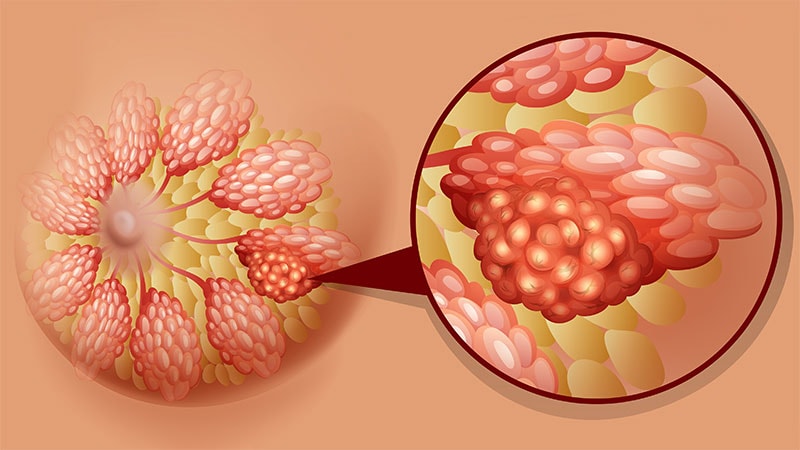Here are Medscape editors’ top 5 breast cancer articles from past month.
Managing T-DXd Adverse Events in the Real World: Now that breast cancer indications for trastuzumab deruxtecan have expanded, oncologists have been prescribing the drug more frequently. But with this greater use is a growing awareness of trastuzumab’s toxicities, which include nausea, vomiting, neutropenia, and interstitial lung disease/pneumonitis. While the drug’s labeling warns of these side effects, some oncologists have become more aggressive with prophylaxis and are taking extra time with patients to explain the potential risks before starting therapy.
Blood Test Signals BRCA Breast Cancer 2 Years Before Diagnosis: Breast cancer can be detected up to 2 years before diagnosis using a recently developed blood test for women who are at high risk. In an analysis of serum samples from women who developed breast cancer and those who did not, researchers found that the levels of 6 of 764 candidate proteins were significantly different between the two groups up to 2 years before diagnosis.
Novel Vaccine Approach Halts Disease After 23 Years of Breast Cancer: A woman who had breast cancer for 23 years and who underwent 12 lines of treatments experienced a dramatic response after receiving a novel cancer vaccine. The patient, who had been participating in a small clinical trial, showed no evidence of new or recurrent disease, and her metastases at several sites were in regression. The vaccine combines local low-dose radiation and PD-1 inhibitor pembrolizumab (Keytruda) along with intramural Flt3L, which stimulates dendritic cells, and intravenous poly-ICLC, an immune-stimulating factor.
“Remarkable” Results: Some Patients With Breast Cancer Skip Surgery: Findings from a small study involving women with early triple-negative or HER2-positive breast cancer suggest that some women may be able to safely skip surgery and immediately undergo whole-breast radiation therapy. After a median follow-up of 26.4 months, women who skipped surgery showed no signs of a single locoregional or distant recurrence.
Olaparib Plus RT Well Tolerated in Triple-Negative Breast Cancer: Using the PARP inhibitor olaparib along with radiation therapy increased the efficacy of radiation therapy, and the combination was well tolerated. At 3 years, the overall survival rate among patients was 83%, and the event-free survival rate was 65%. At a median follow-up of 34 months, only 1 of 24 patients developed late treatment-related grade 2 adverse events; no grade 3 or greater adverse events occurred.
For more news, follow Medscape on Facebook , Twitter , Instagram , and YouTube.
Source: Read Full Article
